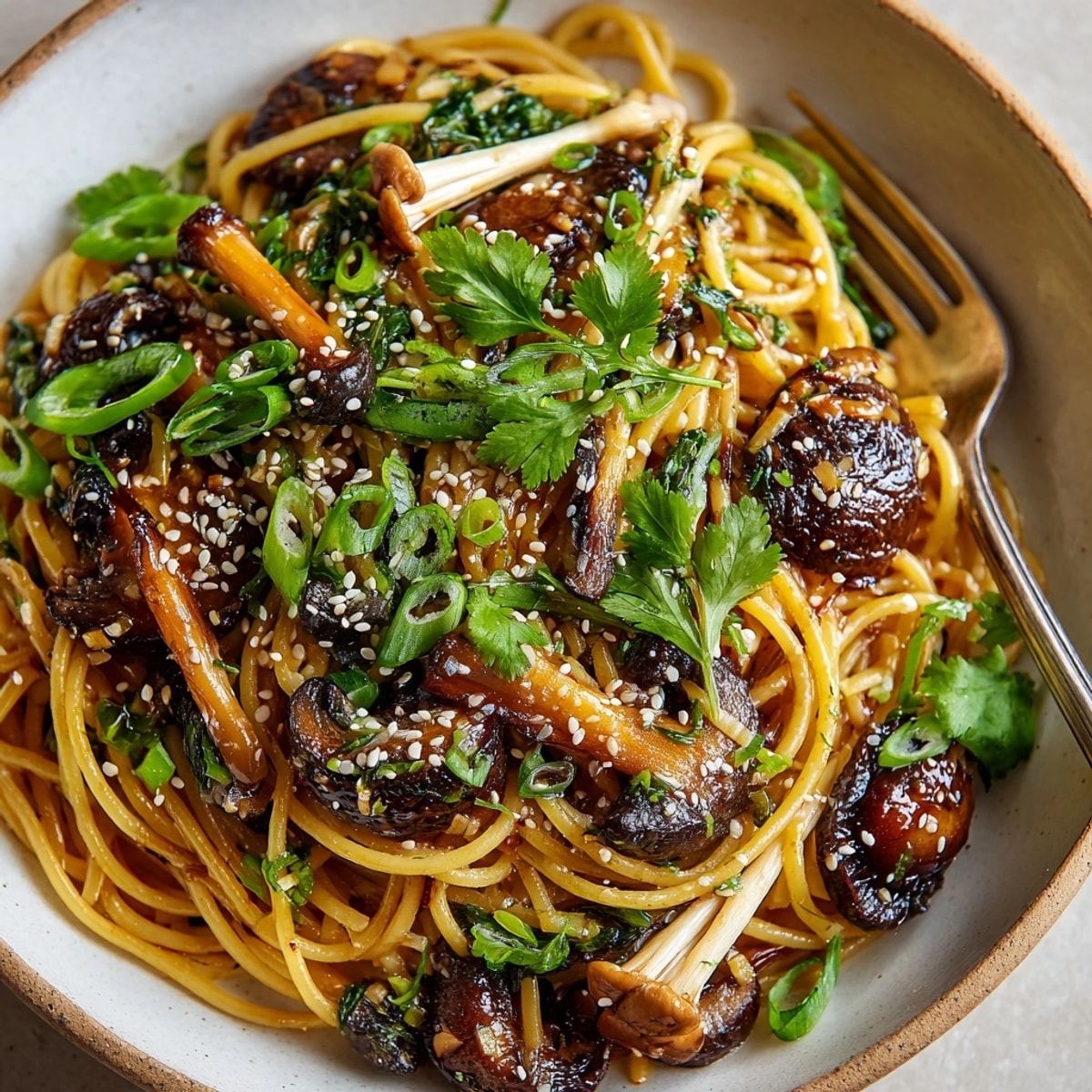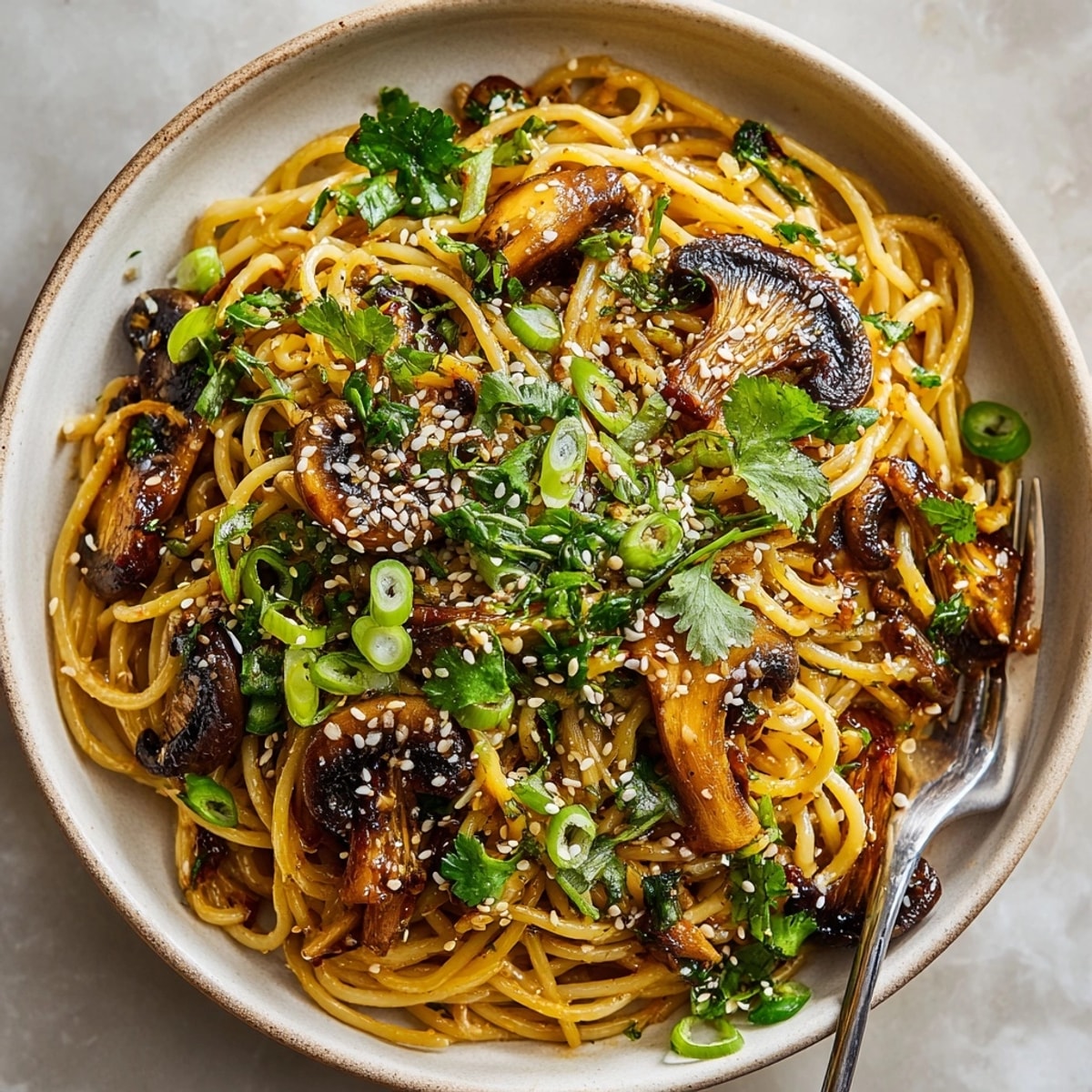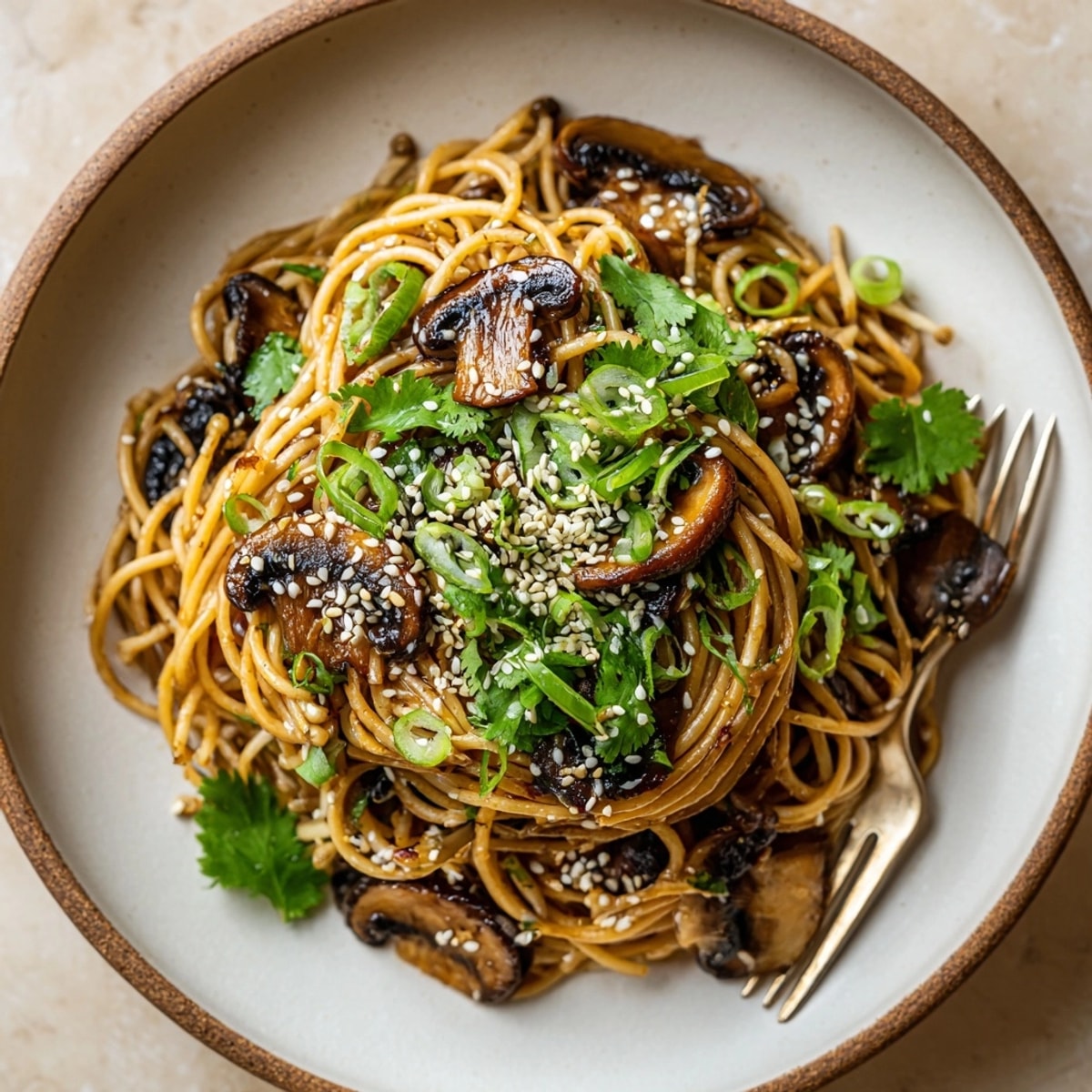 Save
Save This savory soy-glazed mushroom pasta combines the earthy richness of shiitake and enoki mushrooms with a umami-packed soy glaze for a dish that bridges Asian and Italian flavors. The silky sauce clings perfectly to al dente pasta, creating a vegetarian main that feels both comforting and sophisticated.
I first created this recipe when trying to impress my vegetarian friend with something beyond the usual pasta offerings. The combination of butter sautéed mushrooms with the sweet-savory soy glaze was so successful that it's now in my regular rotation whenever I want something special without hours in the kitchen.
Ingredients
- Spaghetti or linguine pasta: creates the perfect base for capturing the flavorful sauce. Choose bronze die pasta for better sauce adhesion.
- Shiitake mushrooms: provide a meaty texture and deep woodsy flavor that forms the backbone of the dish.
- Enoki mushrooms: add a delicate crunch and elegant presentation that elevates the dish visually.
- Cremini mushrooms: offer a mild flavor that balances the more assertive shiitakes.
- Butter and olive oil combination: gives you the perfect balance of flavor and high heat cooking capability.
- Soy sauce: delivers the essential umami foundation. Use low sodium if you're watching salt intake.
- Mirin: adds subtle sweetness and complexity. Traditional Japanese cooking wine worth seeking out.
- Rice vinegar: brings necessary acidity to balance the rich flavors.
- Honey: creates a glossy finish and balances the saltiness of the soy sauce.
- Fresh ginger and garlic: provide aromatic depth that makes the sauce truly special.
Instructions
- Cook the Pasta:
- Bring a large pot of water to a rolling boil. Add a generous tablespoon of salt to the water once boiling. This seasons the pasta from within as it cooks. Add pasta and cook according to package directions until al dente. Before draining, reserve half a cup of the starchy cooking water which will help create a silky sauce later. Drain pasta but do not rinse to preserve the starchy exterior.
- Prepare the Mushrooms:
- While pasta cooks, clean mushrooms properly by gently wiping with a damp paper towel rather than washing under water. Slice shiitakes and creminis to approximately quarter inch thickness. For enoki, simply trim away the woody base and gently separate into smaller bundles. Having all mushrooms prepped before cooking ensures even cooking.
- Sauté the Mushroom Medley:
- Heat a large skillet over medium high heat. Add butter and olive oil together. Once butter has melted and begins to foam slightly, add all mushroom varieties at once. Spread them in an even layer and allow to cook undisturbed for about 2 minutes to develop golden edges. Then stir and continue cooking for another 4 to 6 minutes until they have released their moisture and begun to brown. The mushrooms will significantly reduce in volume as they cook.
- Create the Aromatic Base:
- Add the minced garlic and grated ginger directly to the mushrooms in the pan. Stir constantly for about one minute until you can smell their fragrance but before they begin to brown. This brief cooking releases their essential oils without allowing them to burn and become bitter.
- Make the Soy Glaze:
- In a small bowl, combine soy sauce, mirin, rice vinegar, honey, and black pepper. Whisk together until honey is fully incorporated. Pour this mixture over the mushrooms in the skillet. Allow the sauce to bubble and simmer for 2 to 3 minutes, stirring occasionally. The liquid will reduce slightly and develop a glossy appearance as it begins to thicken.
- Combine and Finish:
- Add the drained pasta directly to the skillet with the glazed mushrooms. Using tongs, toss thoroughly to coat every strand with the sauce. If the mixture seems too dry, add the reserved pasta water a tablespoon at a time until you achieve a silky consistency. The starch in the water helps the sauce cling to the pasta. Continue tossing for about a minute to allow the pasta to absorb some of the flavors.
 Save
Save The shiitake mushrooms are truly the star of this dish. I discovered their transformative power when living in Japan, where they're prized not just for flavor but for their health benefits. When sautéed with butter until golden, they develop an almost meat like quality that makes this vegetarian dish satisfying enough for even dedicated carnivores in my family.
Mushroom Selection Guide
Not all mushrooms are created equal for this recipe. While I've specified three varieties, understanding their unique contributions helps you make substitutions if needed. Shiitakes provide meaty texture and deep earthy flavor. Their ability to absorb the soy glaze makes them non negotiable in this recipe. If you can only find dried shiitakes, rehydrate them in warm water for 20 minutes before using. Enoki mushrooms add visual interest and textural contrast with their delicate crunch. If unavailable, try thinly sliced king oyster mushrooms instead. Cremini mushrooms offer a mild, versatile base. Button mushrooms work as a direct substitute, though with slightly less flavor complexity.
Storage and Reheating
This pasta stores beautifully in an airtight container in the refrigerator for up to 3 days. The flavors actually develop and intensify overnight, making it an excellent make ahead option. When reheating, add a splash of water or vegetable broth to loosen the sauce, as the pasta will absorb liquid as it sits. Warm gently in a skillet over medium low heat, tossing frequently to prevent sticking. Avoid microwave reheating if possible, as it can make the mushrooms tough and the pasta unevenly heated.
Serving Suggestions
This umami rich pasta works beautifully alongside simple sides that won't compete with its complex flavors. A crisp green salad dressed lightly with rice vinegar and sesame oil makes an ideal complement. For a more substantial meal, add a side of miso glazed eggplant or simple steamed edamame. If serving with wine, choose something that can stand up to the umami intensity. A dry Riesling provides bright acidity to cut through the richness, while a light bodied Pinot Noir enhances the earthy mushroom notes.
Seasonal Adaptations
Spring version incorporates blanched asparagus tips and fresh peas added in the final minute of cooking. Summer adaptation includes halved cherry tomatoes and fresh basil instead of cilantro. Winter variation uses dried porcini mushroom powder added to the sauce for deeper flavor.
 Save
Save This dish is a testament to how simple ingredients can create a complex and satisfying meal. Enjoy the rich, savory flavors that come together in perfect harmony.